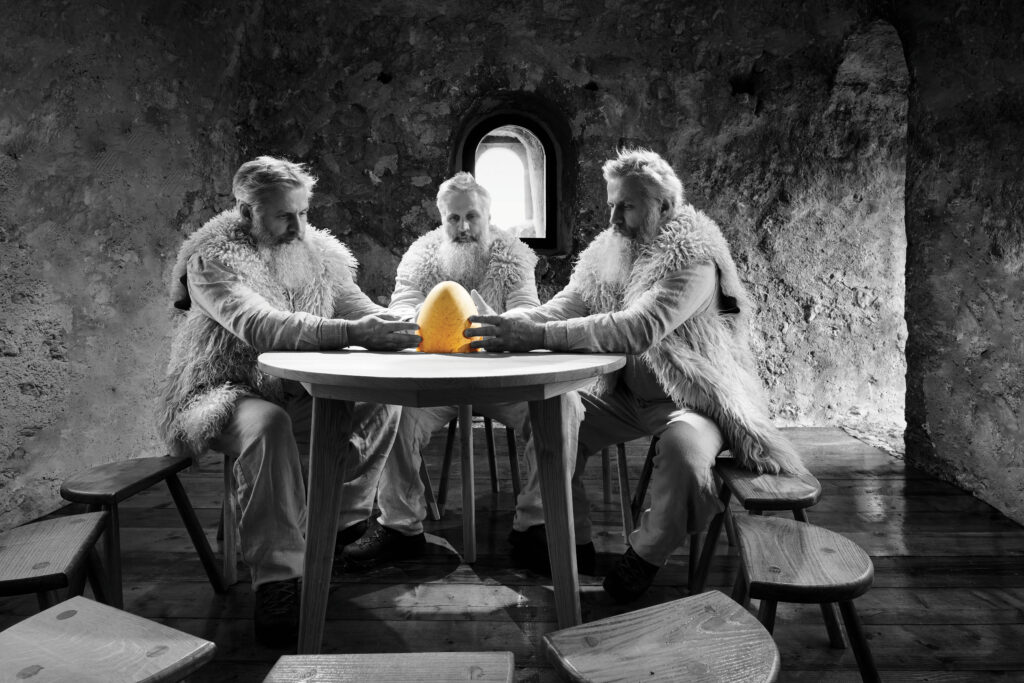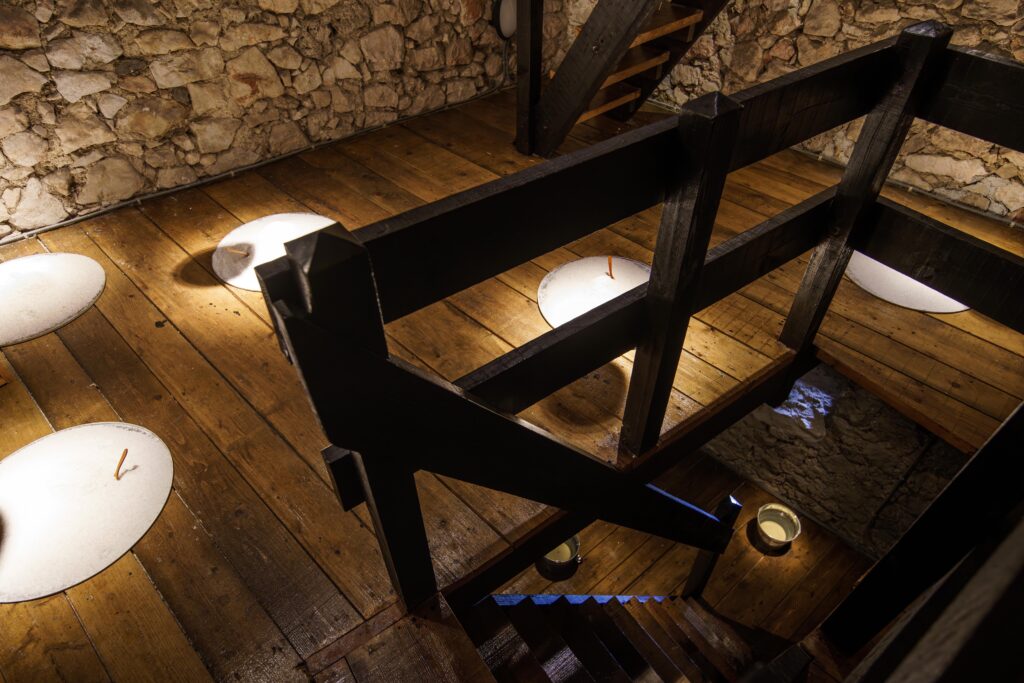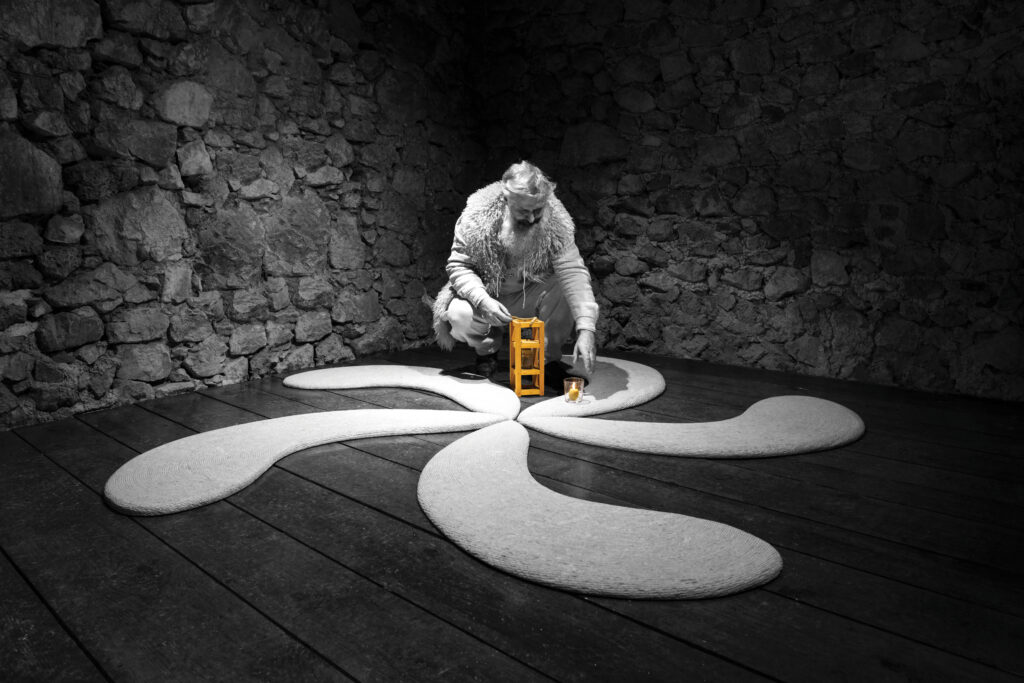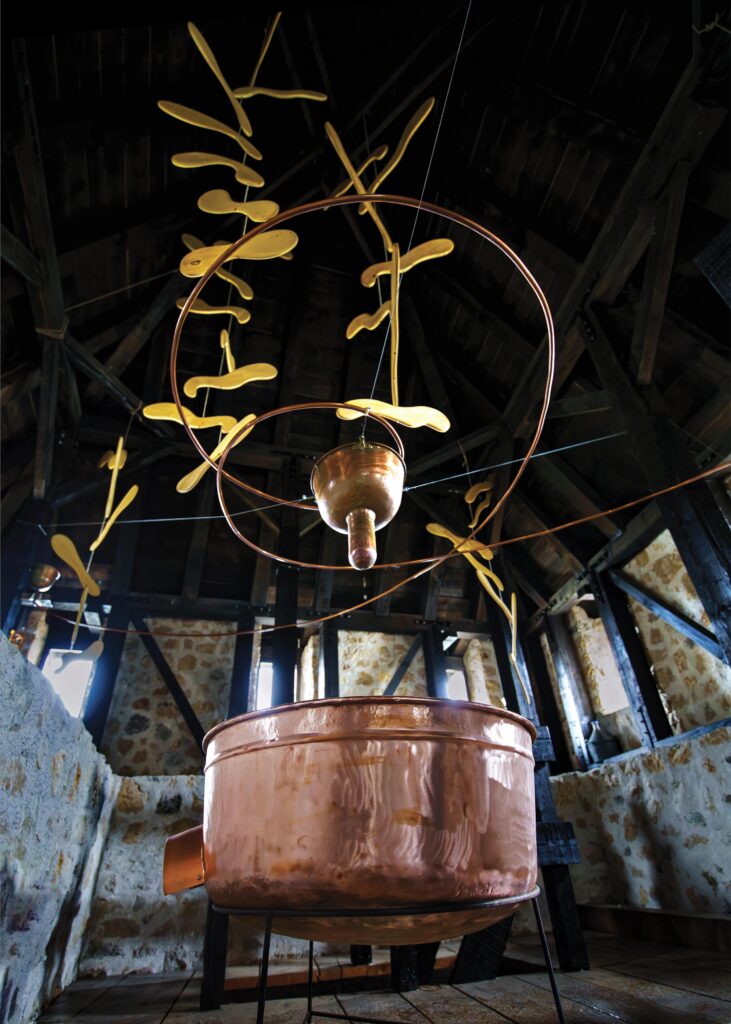

Because the Golubac Fortress itself is a traumatic place to which the story of the beautiful Golubana is connected, who was chained in stone to preserve her honor. The place of her suffering is the Baba – kaj rock, which is located on the other side of the bank. The artist does not want to trivially emphasize the tragic event, but to purify the space of Golubana’s suffering – exploring the traces of what was seen, experienced and revived. Babakaj is his equivalent for the masculine principle, because he perceives the river as feminine. The entire project is designed as a direct introduction to the audience with the artist’s idea, because this is a truly rare opportunity for visitors to not only be observers, but also active participants, and its flow and dramaturgy depend on that.
The installation itself is seemingly simple, at the same time – thoughtfully, ambiguously placed on five levels, five energy fields in the Fourth Tower of the Golubac Fortress. The ambient units that the audience moves upward through are suggestively connected and Boštjan views them as establishing a community, or rather a pillar of light in which the life force of visitors and artifacts, Earth and space, merge. Incidentally, the predecessor of the Golubac exhibition was a few years ago in Slovenia in the former prison in Reichenburg, on the Sava…where this artist was also at a place of suffering – reviving natural processes.


Always engaged, intuitive, authentic – exploring the essential nature of the elements of the Balkan climate – stone, water, wood, metal. For him, thought and matter are equally important, combined in an intimate kind of contemporary spirituality and in the eternal fight against devastation, thus indicating the layers of life. And just as rivers are inextricably linked to the earth, giving it vitality, Boštjan thus, in his recent works, primal connects the territories where two rivers flow – Slovenia and Serbia… synthesizing the source of the Sava in Slovenia and the power of the Danube near Đerdap, just as Franc Prešeren’s “Water Spirit” tells us.
Maja Živanović, art critic
Read the invitation here: